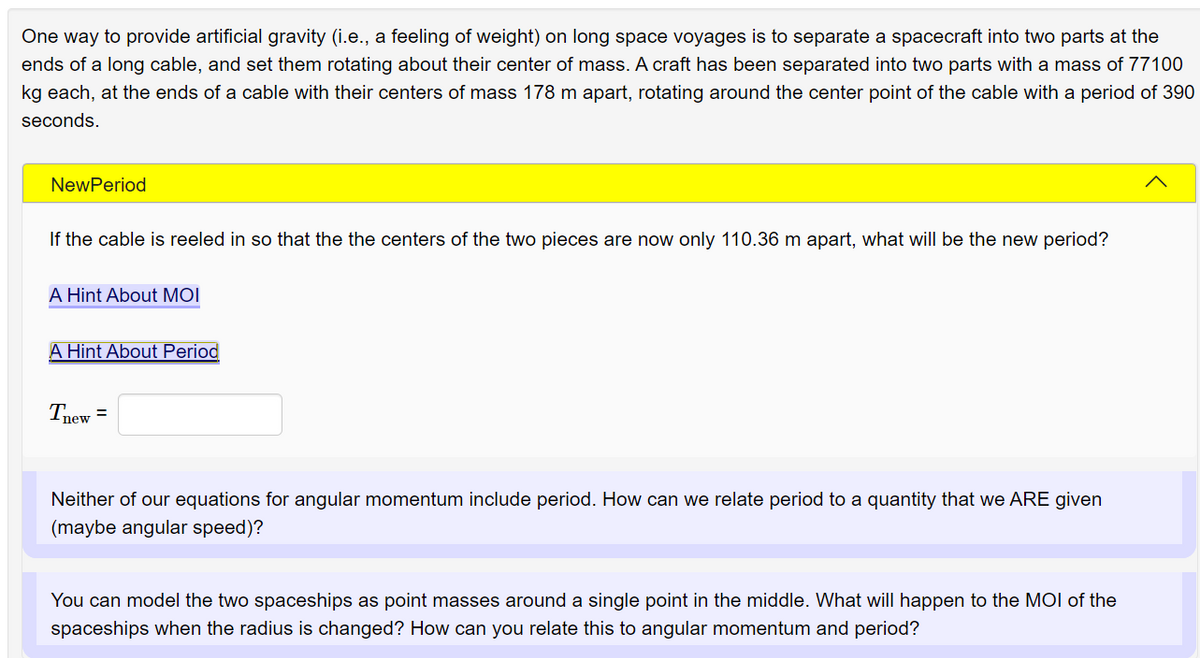One way to provide artificial gravity (i.e., a feeling of weight) on long space voyages is to separate a spacecraft into two parts at the ends of a long cable, and set them rotating about their center of mass. A craft has been separated into two parts with a mass of 77100 kg each, at the ends of a cable with their centers of mass 178 m apart, rotating around the center point of the cable with a period of 390 seconds. NewPeriod If the cable is reeled in so that the the centers of the two pieces are now only 110.36 m apart, what will be the new period? A Hint About MỌI A Hint About Period Tnew = Neither of our equations for angular momentum include period. How can we relate period to a quantity that we ARE given (maybe angular speed)? You can model the two spaceships as point masses around a single point in the middle. What will happen to the MỌI of the spaceships when the radius is changed? How can you relate this to angular momentum and period?
Angular Momentum
The momentum of an object is given by multiplying its mass and velocity. Momentum is a property of any object that moves with mass. The only difference between angular momentum and linear momentum is that angular momentum deals with moving or spinning objects. A moving particle's linear momentum can be thought of as a measure of its linear motion. The force is proportional to the rate of change of linear momentum. Angular momentum is always directly proportional to mass. In rotational motion, the concept of angular momentum is often used. Since it is a conserved quantity—the total angular momentum of a closed system remains constant—it is a significant quantity in physics. To understand the concept of angular momentum first we need to understand a rigid body and its movement, a position vector that is used to specify the position of particles in space. A rigid body possesses motion it may be linear or rotational. Rotational motion plays important role in angular momentum.
Moment of a Force
The idea of moments is an important concept in physics. It arises from the fact that distance often plays an important part in the interaction of, or in determining the impact of forces on bodies. Moments are often described by their order [first, second, or higher order] based on the power to which the distance has to be raised to understand the phenomenon. Of particular note are the second-order moment of mass (Moment of Inertia) and moments of force.
I am unsure how to find the moment of inertia for this problem it seems like it would be a ring but I am unsure.

Trending now
This is a popular solution!
Step by step
Solved in 3 steps with 3 images








